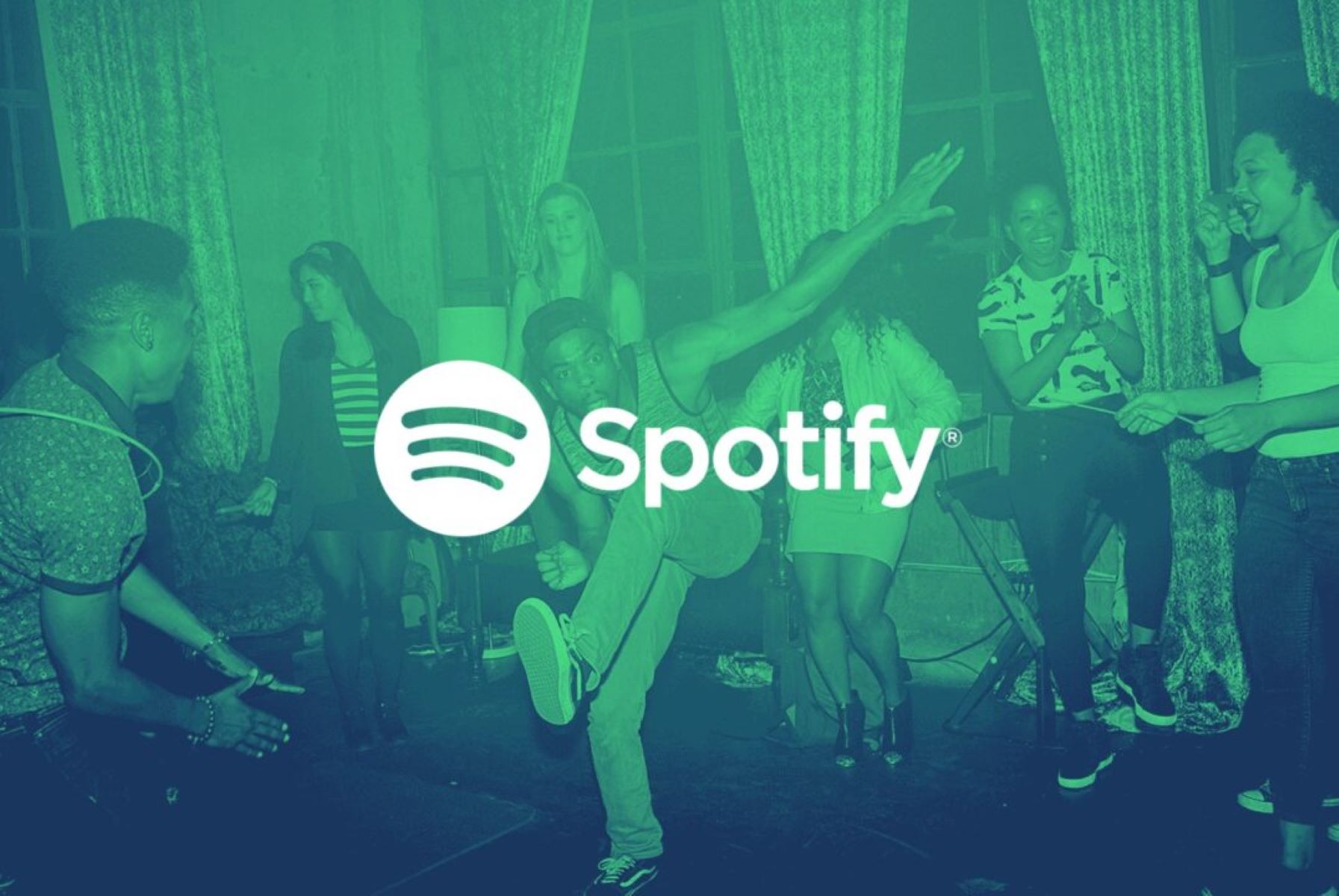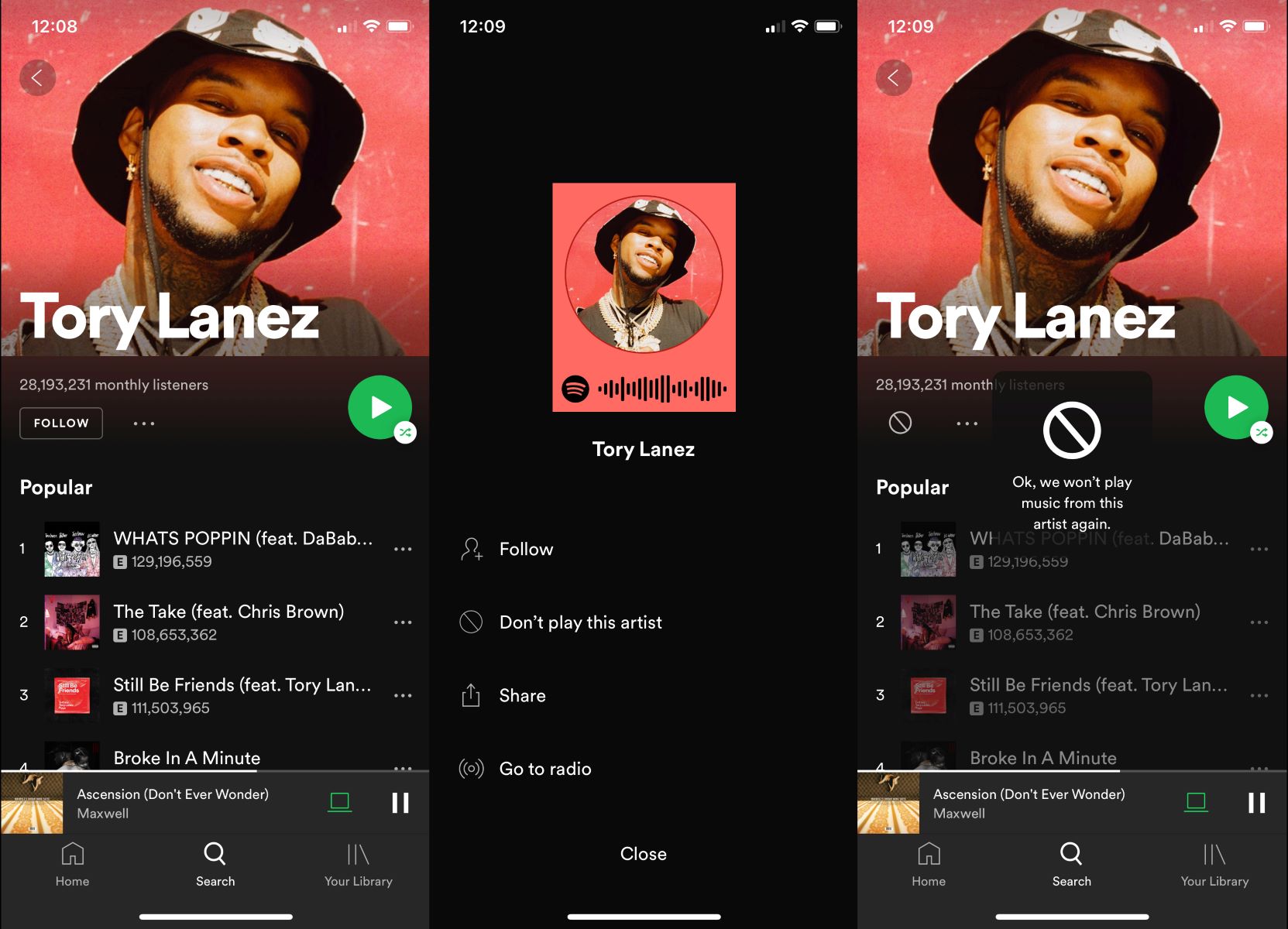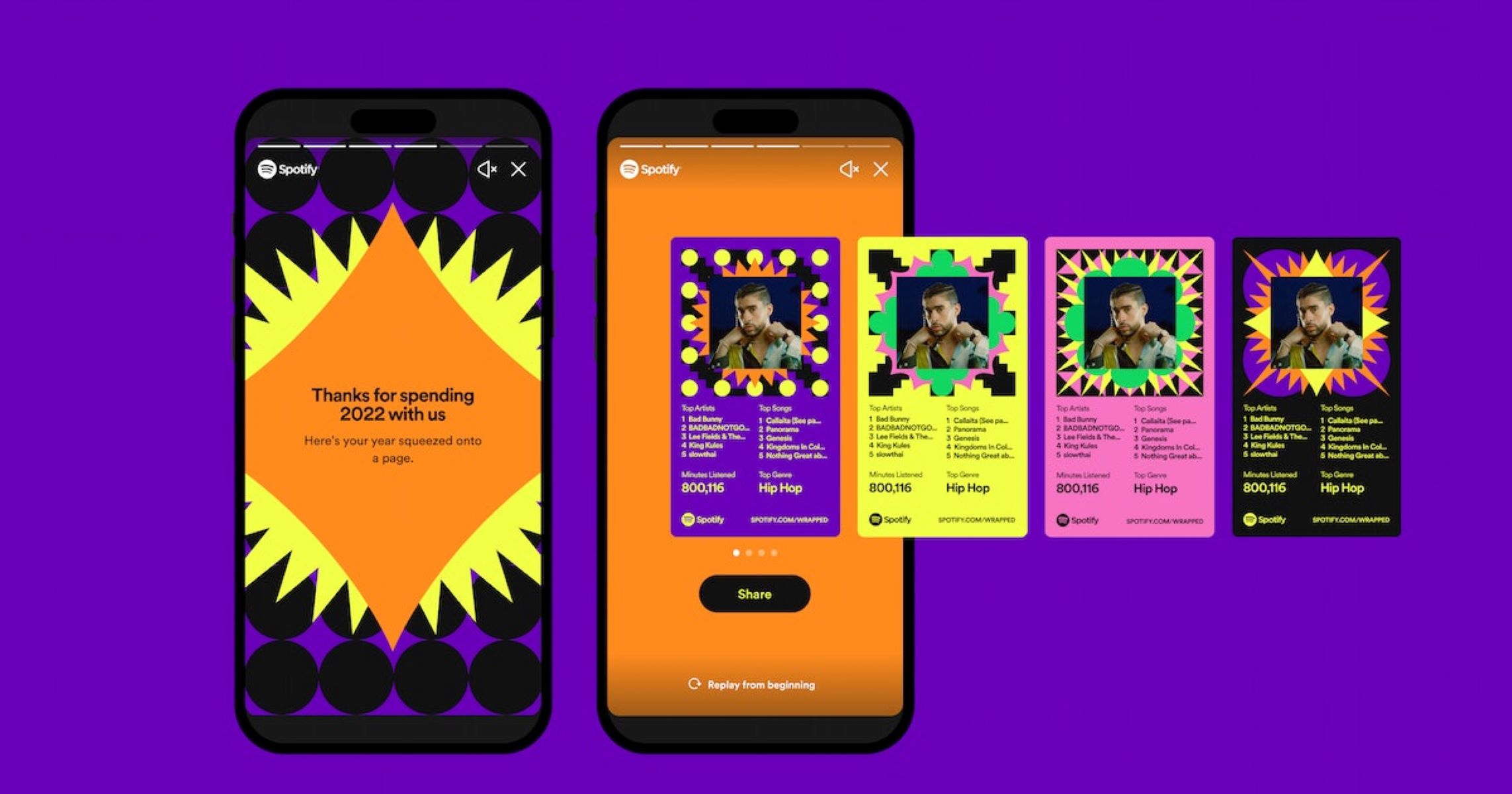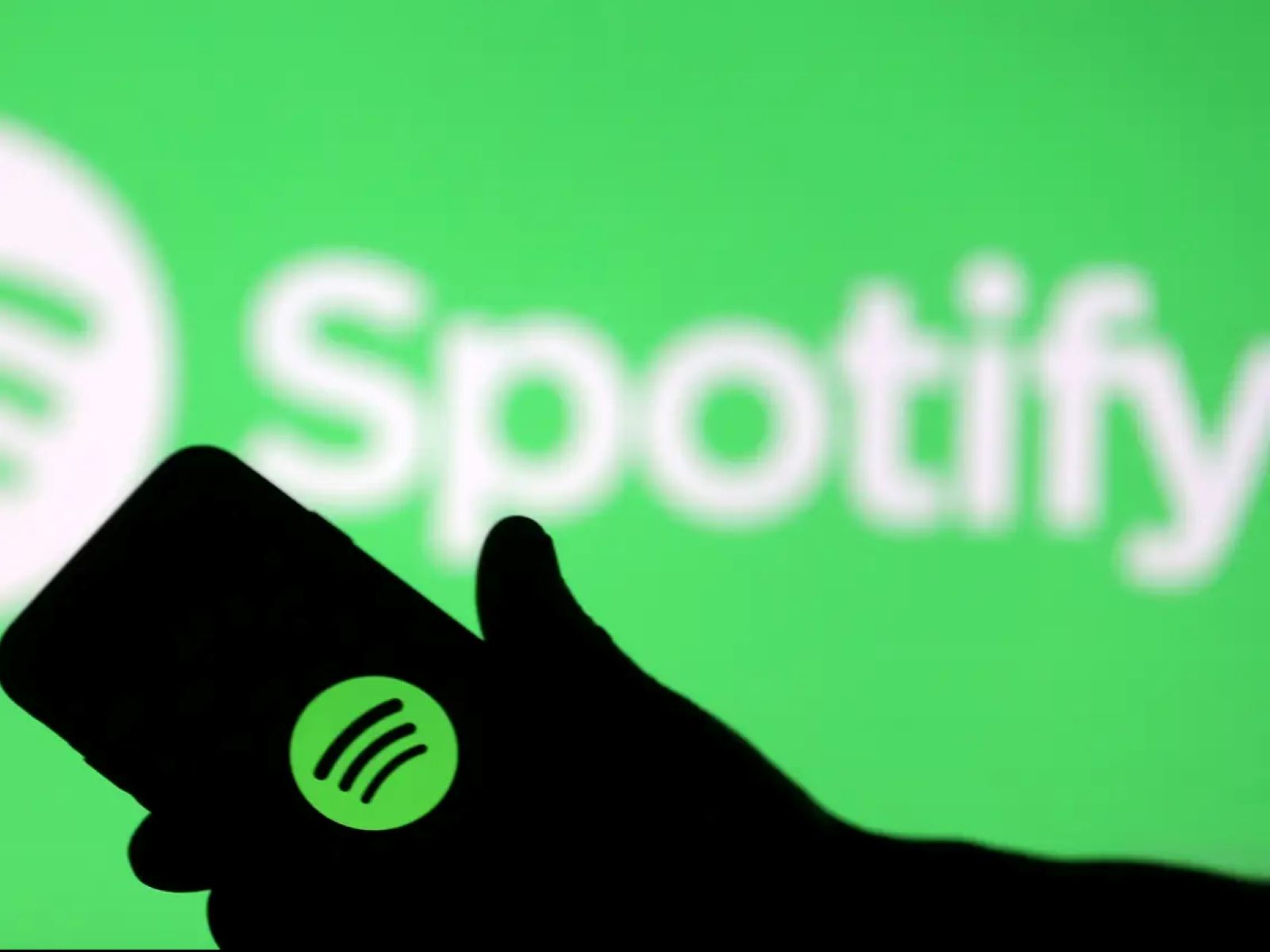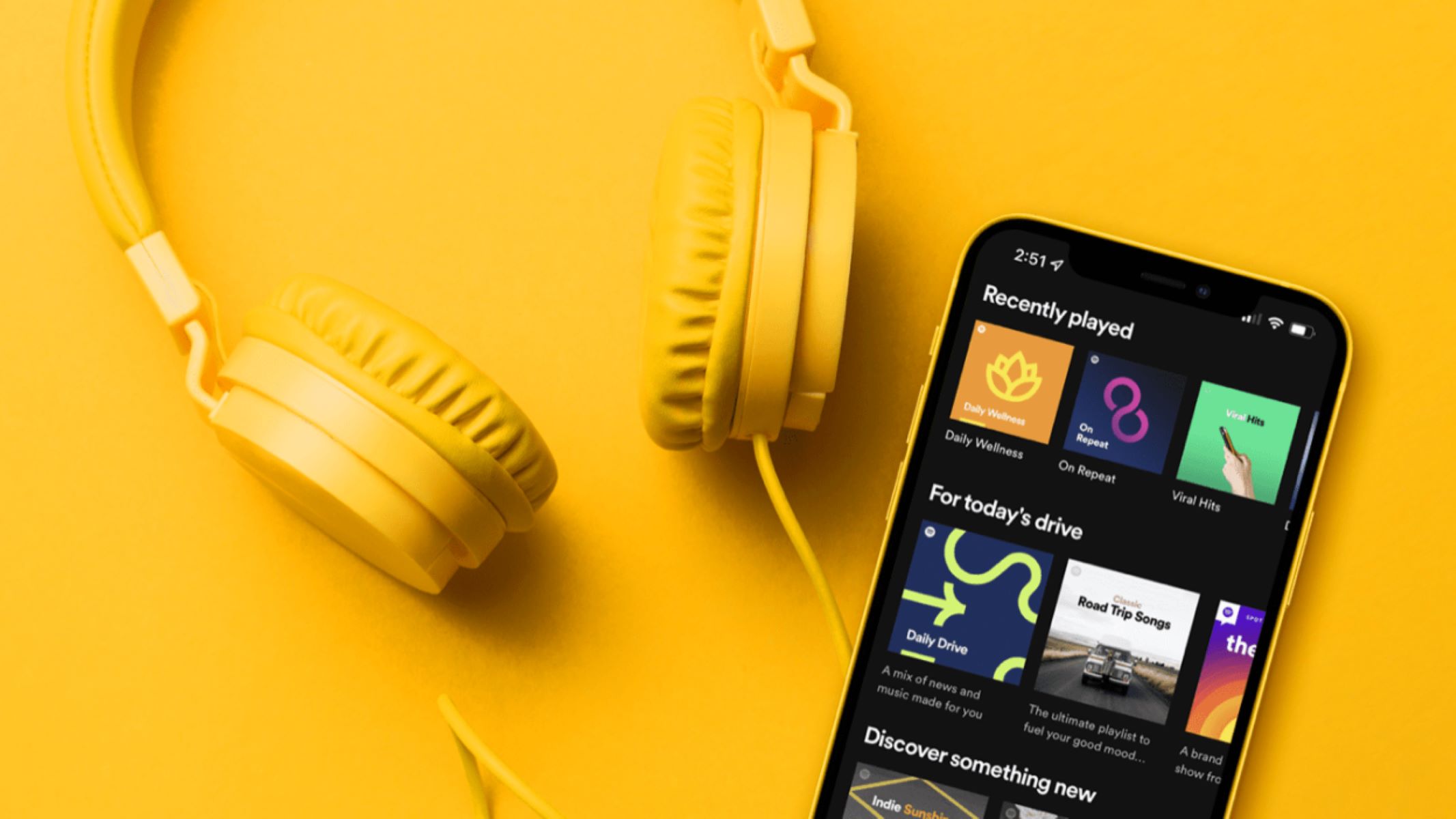Introduction
Streaming platforms have revolutionized the way we consume music, and Spotify stands out as one of the most popular platforms for both listeners and artists. With over 345 million monthly active users, Spotify has provided a vast audience for musicians to showcase their talent and reach new fans. However, an important question that arises is, how much do artists make on Spotify?
While Spotify has been hailed for its convenience and accessibility, there has been ongoing debate surrounding the financial support it offers to artists. With millions of songs available for playback at the click of a button, it’s easy to wonder how artists can earn a significant income from streaming their music on such platforms.
This article aims to shed light on the factors that influence artist earnings on Spotify and provide insights into the average earning potential. Additionally, we will explore strategies that artists can implement to maximize their earnings on the platform. However, it’s important to note that the objective is to provide a general overview, and specific earnings will vary widely depending on various factors.
Understanding how Spotify pays artists requires delving into the intricacies of streaming royalties, playlist placement, and the impact of streaming services on the music industry as a whole. By unraveling these components, artists can gain a better understanding of how to navigate the ever-evolving music landscape to generate revenue from their creations.
It’s important to keep in mind that Spotify, like other streaming platforms, is just one revenue stream for artists. There are numerous alternative avenues available for artists to monetize their music, ranging from live performances and merchandise sales to sync licensing and brand partnerships. Diversifying income sources is essential for artists to thrive in today’s music industry.
In the following sections, we will explore the intricacies of artist earnings on Spotify, discuss the factors that impact these earnings, and provide valuable insights for artists looking to navigate the streaming landscape and optimize their revenue potential. Let’s dive in!
How Does Spotify Pay Artists?
Understanding how Spotify pays artists is crucial to grasp the financial dynamics of the platform. Spotify follows a complex revenue distribution model that involves multiple parties, including the artist, record label, and music publisher.
The primary source of revenue for Spotify is its premium and ad-supported subscriptions. Each month, Spotify allocates a significant portion of its revenue to royalty payments, which are distributed among the rights holders. These rights holders typically include the record label, artist, and music publisher.
The exact amount an artist receives per stream on Spotify can vary widely and depends on several factors. One crucial element is the artist’s royalty rate, which is typically negotiated between the artist and their record label. Royalty rates can range from as low as 0.003 to 0.0084 dollars per stream, although some high-profile artists may negotiate higher rates.
It’s important to note that the royalty rate is not the only factor influencing artist earnings. Spotify’s payout formula takes into account the number of streams an artist receives, the country where the streams occur, and the total revenue generated by Spotify during that period.
Additionally, Spotify operates on a pro-rata model, where the revenue generated from all streams in a given period is pooled and then distributed proportionally to the rights holders. This means that an artist’s earnings are influenced not only by their individual streams but also by the overall streaming activity on the platform.
It’s worth mentioning that while Spotify’s per-stream payout may seem low, the platform has a massive user base, allowing artists to potentially reach a vast audience and accumulate a significant number of streams over time. Therefore, an artist’s earning potential on Spotify is not solely determined by the per-stream rate but also by the popularity and reach of their music.
It’s important for artists to establish clear agreements with their record labels and understand the implications of royalty rates and revenue models. Collaborating with experienced lawyers and industry professionals is vital to ensure fair compensation and navigate the complexities of digital music distribution.
In the next section, we will delve into the factors that can influence an artist’s earnings on Spotify and explore strategies for maximizing revenue on the platform.
Factors Affecting Artist Earnings on Spotify
Several factors play a crucial role in determining an artist’s earnings on Spotify. Understanding these factors is key to maximizing revenue and navigating the digital music landscape effectively.
1. Number of Streams: The number of streams an artist receives directly impacts their earnings. The more popular and widely listened to an artist’s music is, the higher the potential for generating revenue from Spotify. Building a dedicated fan base and promoting music through various channels can help increase the number of streams.
2. Royalty Rates: While Spotify’s average per-stream royalty rate is relatively low, the specific royalty rate negotiated by an artist with their record label significantly affects their earnings. It’s essential for artists to negotiate fair royalty rates that align with their goals and value their creative work.
3. Geographic Location: The geographic location of the listeners also influences an artist’s earnings on Spotify. Spotify operates in various regions globally, and the streaming royalties differ from country to country. Earnings can vary depending on the popularity of an artist in specific regions.
4. Market Competition: The availability of a vast catalog of music on Spotify means that artists face stiff competition for listeners’ attention. The popularity and discoverability of an artist’s music can impact the number of streams and, consequently, their earnings. Building a strong brand, engaging with fans, and seeking playlist placements can help artists stand out in a crowded marketplace.
5. Playlist Placement: Spotify playlists, curated by both algorithmic and human editors, significantly impact an artist’s visibility and streaming numbers. Securing placements on popular playlists can expose an artist to a broader audience and potentially boost their earnings. Artists can pitch their music to official Spotify playlists or focus on cultivating their own niche playlists to nurture a dedicated fan base.
6. Streaming Volume and Listener Behavior: The overall streaming activity on Spotify, as well as listener behavior, influences an artist’s earnings. The revenue generated from all streams in a specific period is pooled and distributed proportionally to the rights holders. Therefore, an artist’s earnings are influenced not only by their individual streams but by the collective streaming volume on the platform.
7. Engagement and Fan Base: Building a strong and engaged fan base is crucial for an artist’s long-term success on Spotify. Active followers who regularly stream an artist’s music can significantly contribute to their earnings. Artists can engage with their fans through social media, live performances, and personalized interactions to cultivate a loyal and supportive community.
In summary, an artist’s earnings on Spotify depend on factors such as the number of streams, negotiated royalty rates, geographic location, market competition, playlist placements, streaming volume, and fan engagement. By strategically navigating and leveraging these elements, artists can maximize their revenue potential on Spotify.
Understanding Spotify’s Streaming Royalties
Spotify’s streaming royalties are a crucial aspect of an artist’s earnings on the platform. It’s important to have a clear understanding of how these royalties are calculated and distributed in order to gauge the financial impact of streaming on Spotify.
Spotify operates on a pro-rata model for distributing streaming royalties. This means that the revenue generated from all streams within a specific period is pooled together, and each artist’s earnings are calculated based on their share of the total streams. For example, if an artist’s tracks account for 1% of the total streams on Spotify during a specific period, they will receive 1% of the revenue generated from streaming during that time.
It’s crucial to note that the pro-rata model does not take into account the individual subscription or advertising revenue generated by each user. Instead, it focuses on the overall revenue generated by Spotify as a whole. This means that even if a user streams an artist’s music exclusively, the artist’s earnings will still depend on the collective streaming activity on the platform.
Another important factor in Spotify’s streaming royalties is the role of free ad-supported streaming. While Spotify offers a free tier for listeners, it generates significantly less revenue compared to the premium subscription service. As a result, the royalty rates for streams on the free tier are typically lower than those on the premium tier.
The per-stream royalty rate on Spotify can vary widely, but industry estimates suggest that it generally ranges from $0.003 to $0.0084 per stream. However, it’s important to understand that these rates are not fixed and can fluctuate based on factors such as the region where the stream occurs and the total revenue generated by Spotify during a specific period.
Moreover, it’s worth mentioning that Spotify’s streaming royalties are just one aspect of an artist’s income. Artists can also generate revenue from other sources, such as physical sales, merchandise, live performances, sync licensing, and brand partnerships. Diversifying income streams is essential for artists to sustain their careers in the constantly evolving music industry.
Understanding the intricacies of Spotify’s streaming royalties is crucial for artists to make informed decisions and set realistic expectations. By analyzing and adapting to the financial dynamics of the platform, artists can strategically navigate the streaming landscape and optimize their potential earnings.
Average Artist Earnings on Spotify
When it comes to artist earnings on Spotify, it’s important to note that there is a wide range of potential earnings, and the average can vary significantly. Many factors, such as popularity, streaming volume, genre, and geographic location, can influence an artist’s income on the platform.
According to a study conducted by Citigroup in 2017, the average per-stream payout across all tiers of the music industry was estimated to be around $0.0038. However, it’s important to recognize that this figure is an average, and individual artist earnings can vary widely based on their specific circumstances.
Higher-profile artists with millions of streams can potentially earn substantial revenue from Spotify. However, for emerging or independent artists with a smaller following, earnings may be more modest, especially in the early stages of their career.
On average, artists can expect to earn between $3,000 and $5,000 per one million streams on Spotify. Keep in mind that this estimate can fluctuate depending on various factors, including royalty rates, geographic location, market competition, and overall streaming volume.
It’s also crucial to recognize that streaming royalties may not provide artists with substantial income on their own. They should be viewed as one piece of the revenue pie, with artists needing to diversify their income streams to sustain their careers. This might include live performances, merchandise sales, sync licensing, brand partnerships, and crowdfunding.
It’s worth noting that while Spotify’s per-stream payout may seem low, the platform’s vast user base provides artists with the opportunity to reach a broad audience and accumulate significant streams over time. The potential for exposure and fan growth on Spotify can lead to increased earnings through other avenues, such as live performances and merchandise sales.
Ultimately, an artist’s earning potential on Spotify hinges on their ability to engage with listeners, cultivate a dedicated fan base, and strategically market their music. Utilizing social media platforms, collaborating with influencers, pitching music to playlists, and leveraging data analytics can contribute to an artist’s success on Spotify and increase their chances of earning more.
While the average artist earnings on Spotify may not be substantial for all artists, the platform plays a vital role in exposing music to a global audience and providing opportunities for growth. By exploring alternative revenue streams and implementing a comprehensive marketing strategy, artists can maximize their earnings and build sustainable careers in the digital music landscape.
Strategies for Maximizing Earnings on Spotify
As an artist on Spotify, there are several strategies you can implement to maximize your earnings on the platform. By combining these strategies with consistent engagement and smart promotion, you can increase your chances of generating revenue and growing your fanbase.
1. Focus on Streaming Volume: While the per-stream payout may be low, increasing the overall number of streams can significantly impact your earnings. Encourage your fans to stream your music consistently and include Spotify links on your website, social media profiles, and email newsletters to make it easier for them to access your songs.
2. Engage with Your Audience: Building a strong connection with your listeners is key to keeping them engaged and encouraging repeat streams. Utilize social media platforms to interact with your fans, share behind-the-scenes content, and respond to their comments and messages. The more connected your audience feels, the more likely they are to support you and stream your music.
3. Pitch Your Music to Playlists: Getting your music featured on popular Spotify playlists can expose your music to a wider audience and increase your chances of gaining new fans. Research and curate playlists that align with your genre and style, and consider reaching out to playlist curators or utilizing Spotify’s official playlist submission process to increase your chances of playlist placement.
4. Collaborate with Artists and Influencers: Collaborating with other artists or influencers in your niche can help expand your reach and attract new listeners. Consider working on collaborations or features with musicians whose audience aligns with yours. Additionally, partnering with influencers who have a relevant following can expose your music to a whole new group of potential fans.
5. Leverage Data Analytics: Spotify provides artists with valuable insights through its analytics dashboard. Use this data to understand which of your songs are performing well, where your listeners are located, and how they are discovering your music. This information can guide your promotional efforts and help you tailor your marketing strategies to maximize your earnings.
6. Diversify Your Revenue Streams: While Spotify is a major streaming platform, it’s important to explore other avenues for generating income. Consider selling merchandise, offering exclusive content through a fan club or subscription service, booking live performances, licensing your music for film and TV placements, or seeking brand partnerships. Diversifying your revenue sources can provide stability and potentially increase your overall earnings.
7. Build Your Email List: Having a direct line of communication with your fans is invaluable. Encourage your listeners to sign up for your email newsletter by offering exclusive content, discounts on merchandise, or early access to new releases. This allows you to directly communicate with your fanbase and keep them informed about new music, upcoming shows, and other opportunities to support you financially.
By implementing these strategies and staying consistent in your efforts, you can increase your chances of maximizing your earnings on Spotify. Remember, building a successful music career requires dedication, creativity, and a deep understanding of your audience. Embrace the opportunities that Spotify provides while also exploring other revenue-generating avenues to create a sustainable and thriving music career.
The Role of Playlist Placement
Playlist placement plays a critical role in an artist’s success on Spotify. Being featured on popular playlists can significantly impact an artist’s visibility, reach, and ultimately, their earnings on the platform.
Spotify offers a wide range of playlists, curated by both algorithmic and human editors. These playlists cater to various genres, moods, and themes, providing listeners with a convenient way to discover new music. Getting your music featured on these playlists exposes your songs to a larger audience and can boost your streams and following.
There are several strategies you can employ to increase your chances of securing playlist placements on Spotify:
1. Research and Curate Your Own Playlist: Create a playlist that showcases not only your own music but also songs from other artists in your genre. Curating a playlist allows you to foster connections with other artists, demonstrates your knowledge and taste in music, and can catch the attention of playlist curators who may consider featuring your music.
2. Submit to Official Spotify Playlists: Spotify provides an official playlist submission process that allows artists to pitch their music directly to its editorial team. Take advantage of this feature by submitting your best tracks to relevant playlists. Be sure to follow the submission guidelines and provide a compelling description and context for your music.
3. Network with Playlist Curators: Engage with playlist curators and influencers who have playlists in your genre. Connect with them on social media, attend industry events, and engage sincerely with their content. Building genuine relationships and showcasing your passion for music can increase your chances of being considered for playlist placements.
4. Collaborate with Artists on Popular Playlists: Seek collaborations or features with artists who already have a presence on popular Spotify playlists. This can introduce your music to their existing fanbase and increase the likelihood of gaining playlist placements through their connections or recommendations.
5. Promote Your Music to Fans and Supporters: Encourage your fans and followers to add your songs to their personal playlists and share them with their network. The more organic playlist placements you receive, the higher the chances of catching the attention of Spotify’s algorithm and playlist curators.
Remember that securing playlist placements is not guaranteed, and it requires consistent effort and strategic planning. Even if your music doesn’t initially land on a major playlist, don’t be discouraged. Focus on creating high-quality music, building your fanbase, and engaging with your audience. Over time, as you gain more streams and followers, your chances of playlist placement increase.
It’s essential to note that while playlist placements can provide a significant boost to an artist’s visibility and earnings, they should not be the sole focus of your marketing efforts. Building a strong, dedicated fanbase, leveraging social media platforms, and exploring other promotional avenues are equally important. Diversifying your promotional strategies can increase your chances of reaching new listeners and building a sustainable music career.
By understanding the role of playlist placement and implementing effective strategies, you can increase your chances of getting your music discovered, gaining new fans, and ultimately maximizing your earnings on Spotify.
The Impact of Streaming Services on Music Industry Revenue
Streaming services have had a profound impact on the music industry, transforming the way people consume music and subsequently affecting revenue streams for artists, record labels, and other industry players.
Prior to the rise of streaming services, physical sales and digital downloads were the primary sources of revenue in the music industry. However, the convenience and accessibility of streaming platforms like Spotify, Apple Music, and Amazon Music have revolutionized the way people listen to music, leading to significant shifts in revenue distribution.
One notable impact of streaming services on the music industry is the decline of physical sales and digital downloads. With the availability of vast catalogs of music for a monthly subscription or ad-supported model, consumers have shifted away from purchasing individual albums or singles. This shift has had a direct impact on the revenue generated from physical sales and digital downloads, which have seen steady declines in recent years.
On the other hand, streaming services have provided a new source of revenue through subscription fees and advertising. Platforms like Spotify and Apple Music generate revenue by offering premium subscription plans with ad-free listening and additional features, as well as by serving advertisements to free users. These revenue streams have become significant contributors to the overall music industry revenue.
However, it’s important to note that the revenue generated from streaming services is often much lower per stream than what was traditionally earned from physical sales or downloads. The low per-stream payout has been a point of contention for artists and songwriters. Many argue that the current streaming revenue model doesn’t adequately compensate creators for their work, especially for those with smaller or niche audiences.
Nevertheless, it’s important to recognize that streaming services have also brought various opportunities for artists to reach a global audience and expand their fanbase. The platforms have facilitated the rise of independent artists who can now distribute their music worldwide without the need for a traditional record label. This democratization of the music industry has opened doors for emerging artists to gain recognition and monetize their creativity on a larger scale.
Moreover, the availability of extensive data analytics on streaming platforms has become a valuable tool for artists and industry professionals. Artists can track their listeners’ demographics, popular songs, geographical distribution, and other crucial insights. This data-driven approach assists artists in understanding their audience better, planning tours, targeting promotional efforts, and maximizing their earning potential.
In summary, streaming services have transformed the music industry by changing consumer listening habits and revenue distribution. While physical sales and digital downloads have declined, streaming platforms have become the primary source of revenue. Despite concerns about low per-stream payouts, streaming services have provided opportunities for artists to reach a global audience and gain exposure. The digital era has also ushered in valuable data analytics that artists can leverage to make informed decisions and optimize their earning potential in the evolving music landscape.
Alternative Revenue Streams for Artists Beyond Streaming
While streaming services like Spotify have become a dominant force in the music industry, there are alternative revenue streams that artists can explore to supplement their earnings and diversify their income sources. These alternatives not only provide additional financial stability but also allow artists to connect with fans in different ways and expand their creative endeavors.
1. Live Performances: One of the most traditional and lucrative revenue streams for artists is live performances. Concerts, festivals, and tours provide opportunities for artists to showcase their talent and engage directly with their fans. Live performances not only generate ticket sales but also often lead to merchandise sales and increased streaming activity. To maximize earnings from live performances, artists can focus on building a strong fan base, securing favorable booking deals, and expanding their tour circuits.
2. Merchandise Sales: Selling merchandise such as t-shirts, posters, vinyl records, and other branded items can be a profitable venture for artists. Fans often appreciate the opportunity to support their favorite artists and show their loyalty by purchasing merch. Artists can explore various merchandise options, collaborate with designers, and set up online stores to reach a wider audience and generate revenue beyond streaming.
3. Sync Licensing: Sync licensing involves placing music in advertisements, films, TV shows, and other media. This can be a highly lucrative revenue stream for artists, as it provides exposure to new audiences and offers substantial licensing fees. Artists can work with music supervisors, licensing agencies, or utilize online platforms that connect them directly with potential sync licensing opportunities.
4. Songwriting and Publishing: Artists can generate revenue through songwriting and publishing royalties. Writing songs for other artists, pitching songs to music publishers, and registering their own compositions with performance rights organizations (PROs) can lead to income from mechanical and performance royalties. Collaboration with other songwriters and producers can also be a fruitful way to expand songwriting opportunities.
5. Brand Partnerships and Sponsorships: Collaborating with brands for endorsements, sponsorships, and partnerships can provide artists with both financial support and increased exposure. Artists can align with brands that resonate with their values and target demographic, leading to mutually beneficial relationships that promote both the artist and the brand.
6. Patreon and Fan Subscriptions: Artists can establish a direct relationship with their fans through platforms like Patreon or fan subscriptions. These platforms allow artists to offer exclusive content, behind-the-scenes access, early releases, and other perks to subscribed fans who pay a recurring fee. This provides ongoing revenue and fosters a closer connection with loyal supporters.
7. Music Education and Workshops: Artists with expertise in their craft can explore opportunities for music education. This can involve giving workshops, teaching lessons, or even creating online courses. Sharing knowledge and skills not only generates income but also helps artists build a community and mentor the next generation of musicians.
By diversifying their revenue streams, artists can protect themselves from fluctuations in the music industry and explore new creative avenues. While streaming remains a significant part of the revenue puzzle, incorporating these alternative sources can provide additional stability, reach, and financial sustainability for artists pursuing their passion.
Conclusion
As streaming platforms continue to dominate the music industry, it is essential for artists to understand the intricacies of earning revenue on platforms like Spotify. While the per-stream payout may seem low, the potential for exposure and the ability to reach a global audience should not be underestimated. By implementing strategies to maximize earnings, artists can thrive and build sustainable careers in the digital music landscape.
Factors such as streaming volume, playlist placements, engagement with fans, and diversifying revenue streams play significant roles in an artist’s success on Spotify. Increasing the number of streams, securing playlist placements, and engaging with fans can all contribute to expanding an artist’s reach and boosting their earnings.
Moreover, artists should explore various alternative revenue streams beyond streaming, such as live performances, merchandise sales, sync licensing, brand partnerships, and fan subscriptions. Diversifying income sources provides stability and enables artists to connect with fans in different ways, fostering a loyal and supportive community while generating revenue from multiple channels.
While streaming services have revolutionized music consumption, it is important to recognize that they are only one piece of the revenue puzzle. Artists should pursue a holistic approach, leveraging social media, data analytics, and marketing strategies to promote their music, cultivate their brand, and connect with their audience.
Ultimately, the combination of strategic decision-making, consistent engagement with fans, and a diversified approach to revenue generation can lead to success on Spotify and beyond. Artists who embrace these strategies are well-positioned to navigate the ever-changing music industry landscape and maximize their potential earnings in the digital age.







